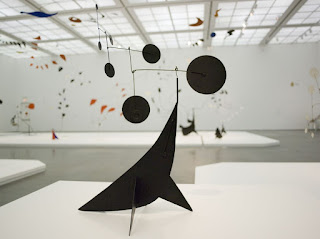Dot Day is one of my favorite projects of the year. Not only is the book “The Dot” by Peter Reynolds a great book that students love, the story sparks so many great conversations with students and projects. For the past two years I have used the book as a jumping off point to lead a discussion about art, making our marks, how we make marks on other people’s hearts, and a discussion about collaboration and working as a community. Last year the culminating project was making art robots. (Here is a link to blog posts about that project http://thereimaginedlibrary.blogspot.com/2016/09/deeper-connections-with-dot-day.html).
After reflecting on last year’s project and some of the limitations of small hands and making some of the parts of the art robots, I decided to try a new art building project, building cardboard manual art machines.
The format of the project started the same as it has in the past. We began by reading the book “The Dot” and having the students map the beginning, middle and end of the book.
Next, we looked at the character of Vashti. Students were asked to brainstorm words they would use to describe Vashti at the beginning of the story and words to describe her at the end of the story.
Then, students brainstormed different ways that they made their mark with art and what materials they used to make art.
The next step was having students think about different ways that they made their mark on other people’s hearts. We talked about how we treat people and interact with them can leave positive marks on other people’s hearts. Students brainstormed all the different positive ways they interact with people including inviting people to play on the playground, helping a classmate to the nurse or holding the door open for classmates.
Building on the focus of positive ways students interact with classmates, the final step was asking students to think about a time that they made or built something with someone else and it was a good experience. I asked students to really think about what made that collaboration a positive experience. We documented all of their thoughts and then sorted them into similar themes. This process gave the students five characteristics or qualities of a collaborator. The five that the students came up with were: Listen, Share ideas, Everyone agrees, Everyone has a part, and Everyone is kind.
The next step in the process was to test their collaboration qualities. Students were put in small groups and asked to set the norms for their group to make sure that they use all the qualities of a collaborator. Each group set the rules and ways they were going to make sure that they would follow the qualities. I made sure to emphasis that these were going to be referenced throughout the process and if they needed to resolve a conflict they would need to look at their norms to help. Once groups set their norms, it was time to ideate.
Students were shown the materials that they could use to build their art machines including cardboard, wooden rods, duct tape, squirt bottles, paint and string. Groups then designed their art machines. They drew out their plans and then started building their machines. Groups used their norms to make sure that all students ideas would be included and that they worked together to make their machine.
Students started building!
The next step was the testing phase. Students filled one squirt bottle up with paint and tested their machine on a test sheet of paper. Many of the students had to think and rethink some of their designs when their first test did not work.
After reworking and rethinking their designs they tested again and then were ready for their final painting. Students used artist canvas to make their final collaborative piece of artwork. Each member of the group signed their artwork, just like Vashti did in “The Dot.” All of the student artwork will be shared in an art gallery show, just like Vashti in the book.
A new part of this project that I added this year was a reflection piece. I asked three prompt questions to get students talking about their process and any challenges that happened. I also asked them which of the collaborator qualities that they thought was most important in the process. I wanted to see what the students were thinking during this process and if they were making deeper connections with the work in ways that I hoped they would. Many of the reflections were very thoughtful about the work that they did and what was important to them and what they really got out of the process.
The plan is for the rest of the school year to have the collaborator qualities displayed in the library and in their classroom as students work together so they can reference them as they are working as collaborators.




























